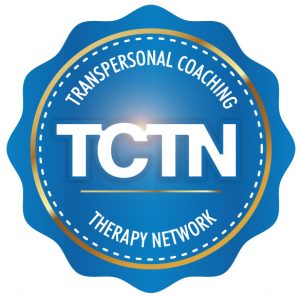Transpersonal Coaching & Therapy Network Forum
Use of this forum is exclusively for TCTN members.
.
For information about TCTN membership (free) visit the TCTN page.
.
Register or login below to add a new forum topic or respond to an existing topic.
Notifications
Clear all
Topic starter
14/11/2022 8:53 pm
“Between stimulus and response there is a space. In that space lies our power to choose our response. In our response lies our growth and our freedom” – Victor Frankl. Wise quote indeed, however I find myself struggling facilitating the ‘’space between’’ when, most of the time, my response is spontaneous and unconscious!
Would love to read your comments/advise.
Kindly.
17/11/2022 6:47 pm
Hm, yes, I see what you mean.
Perhaps we can't engineer or widen that space, since the space is intuitive and non-conscious and perhaps outside the reach of our analytical or intent-setting minds. But then, we may have more control over what surrounds that space. Open Awareness, for example, uses the content of our senses and perceptions (the framework or scaffolding of our awareness) to signal our pysche to create a metaphorically wider space. We don't "work" on the space directly, but we work on what holds it in place. The "wider" or more receptive the awareness around the space, the more the space fills itself.
Which may be why suggesting to someone to "find the gap between stimulus and response" is less helpful than saying something like "notice what you notice and be curious". I didn't mean this to sound like a riddle, but you know what I mean, don't you think?
Hennie
gchemali reacted
Topic starter
31/12/2022 8:58 am
Hi Hennie,
Thank you for your insights and apologies for the late reply.
Open Awareness is of course the solution to Frankl’s quote.
I understand your sentence: ‘’The "wider" or more receptive the awareness around the space, the more the space fills itself’’ as that the width of the space between stimulus and response, and our subsequent freedom and power to choose depends on the level of our conscious awareness of the situation and particularly of the existence of the gap. Consequently, the more conscious we are of the gap, the more the space fills itself with more choices in how we respond to that situation.
Perhaps the following two situations complement your answer:
- Situation where we allow the ‘’space to exists’’ between stimulus and response.
In that case one can hold its own inner space in Open Awareness (rapport with self and others) and be aware of one’s beliefs, emotions, reactions and therefore be aware of the response to the stimulus and process them.
‘’Components of Holding the Space include rapport and mutual resonance’’ (Bandler & Grinder, 1976; Siegel, 2013),)
‘’The spacial awareness that this skill cultivates creates distance between the thinker and the thoughts, thereby enabling one to identify less with the thoughts which in turn helps one to not be affected by one’s thoughts or self-talk.’’ (Dängeli, p. 78, ASE training manual).
- Situation where the response is instantaneous, automatic, compulsive or unconscious rather than slow and deliberate.
Since there is no space, perhaps one ability to notice what to notice and be curious is unlikely in ‘’real time’’ and the only conscious and non-judgmental lesson learned is afterwards.
I am sharing hereafter some extracts from Joseph LeDoux in his article ‘’ Rethinking the Emotional Brain - Neuron - Volume 73, Issue 5, 8 March 2012’’. He wrote:
QUOTE
Consequences of Survival Circuit Activation (commonly called emotional or motivated situations)
When a survival circuit trigger activates a survival circuit, a number of consequences follow.
(1) Innate behavioral [As per LeDoux, innate behavior is behavior that's genetically hardwired in an organism and can be performed in response to a cue without prior experience] responses are potentially activated, as well as autonomic nervous system (ANS) responses and hormonal responses. These each generate feedback to the brain.
(2) Neuromodulator [dopamine, serotonin, noradrenaline, histamine] systems are activated and begin to regulate excitability and neurotransmission throughout the brain.
(3) Goal-directed instrumental behavior is initiated by the motivation system.
(4) Sensory, cognitive, and explicit memory systems are also affected, leading to enhanced attention to relevant stimuli and the formation of new explicit memories (memories formed by the hippocampus and related cortical areas) and implicit memories (memories formed within the survival circuit).
LeDoux added, in the field of emotion, the term automatic appraisal is sometimes used when discussing how significant stimuli elicit so called emotional responses automatically (without deliberate control), and is contrasted with cognitive or reflective appraisal, where processing that is deliberate, controlled and often conscious, determines stimulus meaning and predisposes actions (e.g., Arnold, 1960; Bowlby, 1969; Frijda, 1986; Lazarus, 1991a, 1991b; Leventhal and Scherer, 1987; Lazarus and Folkman, 1984; Smith and Ellsworth, 1985; Scherer, 1988; Scherer et al., 2001; Sander et al., 2005; Jarymowicz, 2009).
END OF QUOTE
Looking forward to 2023 and all it has to offer us.
Happy new year.
Ghassan.
“Between stimulus and response there is a space. In that space lies our power to choose our response. In our response lies our growth and our freedom” – Victor Frankl. Wise quote indeed, however I find myself struggling facilitating the ‘’space between’’ when, most of the time, my response is spontaneous and unconscious!
Would love to read your comments/advise.
Kindly.
Hm, yes, I see what you mean.
Perhaps we can't engineer or widen that space, since the space is intuitive and non-conscious and perhaps outside the reach of our analytical or intent-setting minds. But then, we may have more control over what surrounds that space. Open Awareness, for example, uses the content of our senses and perceptions (the framework or scaffolding of our awareness) to signal our pysche to create a metaphorically wider space. We don't "work" on the space directly, but we work on what holds it in place. The "wider" or more receptive the awareness around the space, the more the space fills itself.
Which may be why suggesting to someone to "find the gap between stimulus and response" is less helpful than saying something like "notice what you notice and be curious". I didn't mean this to sound like a riddle, but you know what I mean, don't you think?
Hennie
Hi Hennie,
Thank you for your insights and apologies for the late reply.
Open Awareness is of course the solution to Frankl’s quote.
I understand your sentence: ‘’The "wider" or more receptive the awareness around the space, the more the space fills itself’’ as that the width of the space between stimulus and response, and our subsequent freedom and power to choose depends on the level of our conscious awareness of the situation and particularly of the existence of the gap. Consequently, the more conscious we are of the gap, the more the space fills itself with more choices in how we respond to that situation.
Perhaps the following two situations complement your answer:
- Situation where we allow the ‘’space to exists’’ between stimulus and response.
In that case one can hold its own inner space in Open Awareness (rapport with self and others) and be aware of one’s beliefs, emotions, reactions and therefore be aware of the response to the stimulus and process them.
‘’Components of Holding the Space include rapport and mutual resonance’’ (Bandler & Grinder, 1976; Siegel, 2013),)
‘’The spacial awareness that this skill cultivates creates distance between the thinker and the thoughts, thereby enabling one to identify less with the thoughts which in turn helps one to not be affected by one’s thoughts or self-talk.’’ (Dängeli, p. 78, ASE training manual).
- Situation where the response is instantaneous, automatic, compulsive or unconscious rather than slow and deliberate.
Since there is no space, perhaps one ability to notice what to notice and be curious is unlikely in ‘’real time’’ and the only conscious and non-judgmental lesson learned is afterwards.
I am sharing hereafter some extracts from Joseph LeDoux in his article ‘’ Rethinking the Emotional Brain - Neuron - Volume 73, Issue 5, 8 March 2012’’. He wrote:
QUOTE
Consequences of Survival Circuit Activation (commonly called emotional or motivated situations)
When a survival circuit trigger activates a survival circuit, a number of consequences follow.
(1) Innate behavioral [As per LeDoux, innate behavior is behavior that's genetically hardwired in an organism and can be performed in response to a cue without prior experience] responses are potentially activated, as well as autonomic nervous system (ANS) responses and hormonal responses. These each generate feedback to the brain.
(2) Neuromodulator [dopamine, serotonin, noradrenaline, histamine] systems are activated and begin to regulate excitability and neurotransmission throughout the brain.
(3) Goal-directed instrumental behavior is initiated by the motivation system.
(4) Sensory, cognitive, and explicit memory systems are also affected, leading to enhanced attention to relevant stimuli and the formation of new explicit memories (memories formed by the hippocampus and related cortical areas) and implicit memories (memories formed within the survival circuit).
LeDoux added, in the field of emotion, the term automatic appraisal is sometimes used when discussing how significant stimuli elicit so called emotional responses automatically (without deliberate control), and is contrasted with cognitive or reflective appraisal, where processing that is deliberate, controlled and often conscious, determines stimulus meaning and predisposes actions (e.g., Arnold, 1960; Bowlby, 1969; Frijda, 1986; Lazarus, 1991a, 1991b; Leventhal and Scherer, 1987; Lazarus and Folkman, 1984; Smith and Ellsworth, 1985; Scherer, 1988; Scherer et al., 2001; Sander et al., 2005; Jarymowicz, 2009).
END OF QUOTE
Looking forward to 2023 and all it has to offer us.
Happy new year.
Ghassan.
THIS FORUM IS FOR:
- Exploring the value of transpersonal perspectives in coaching or therapy.
- Investigating the usefulness of transpersonal interventions in coaching or therapy.
- Engaging in conversations to inspire and motivate a transpersonal vision among coaches and therapists.
- Introducing and discussing transpersonal models and processes that can be applied in coaching or therapy.
- Sharing ideas, knowledge, experiences and resources that are useful to transpersonal coaches or therapists.
FORUM RULES:
- Only TCTN members are permitted to post in the TCTN forum. Membership is free
- Posts that are offensive, biased, unethical, unfair or generally negative will not be accepted.
- Any misconduct on the part of a member will result in that member being removed from TCTN and all their member benefits withdrawn.
- It is acceptable to link to published papers, articles and resources that are directly related to the topic of the forum post, however, promoting of services will not be allowed unless the service is relevant and has been granted the IACTM Stamp of Approval.










